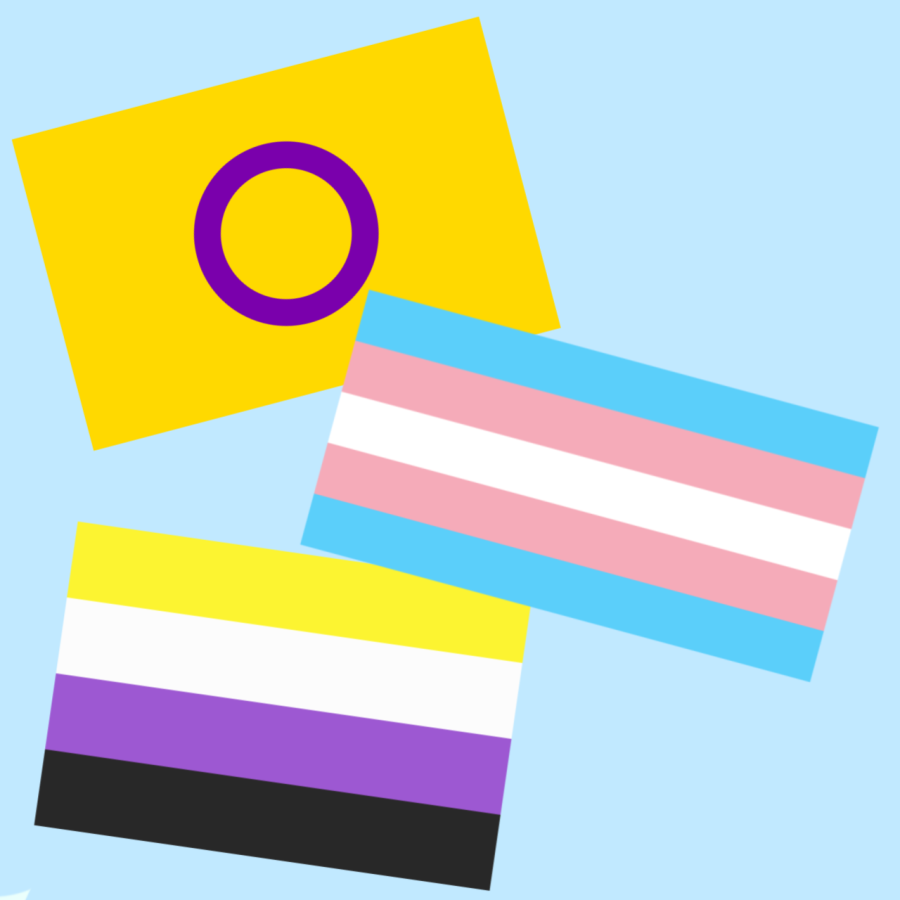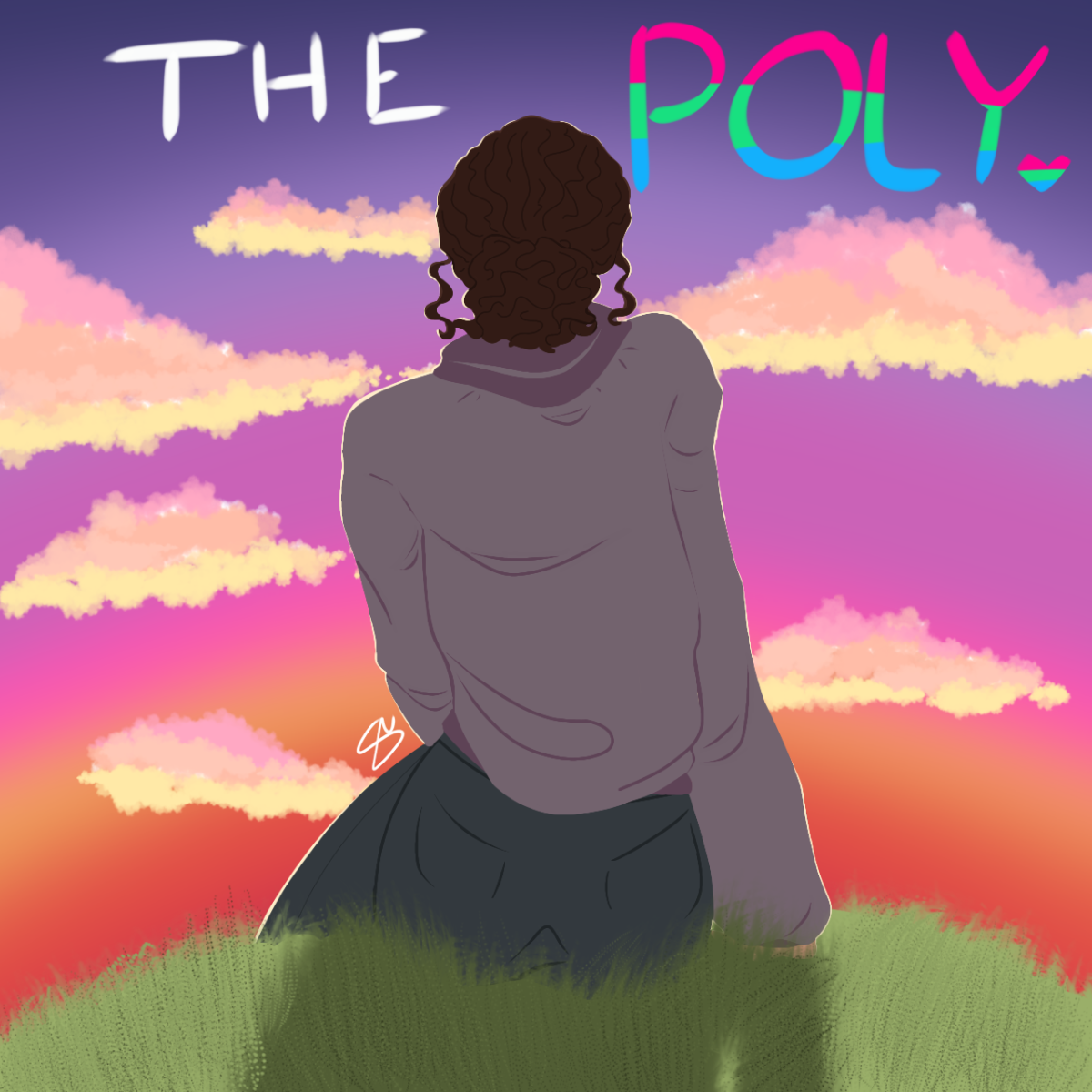Transgender Awareness
December 8, 2022
Transgender Awareness Week is celebrated from Nov.13-19. The purpose of these six days is to emphasize the voices of transgender and gender non-conforming people. This week is also a perfect time for people to educate themselves on the background of the trans community.
Additionally, advocates use this week to bring more attention to Transgender Day of Remembrance, which is celebrated on Nov.20. Transgender Day of Remembrance is a day when people honor victims of and lives lost to transphobic violence.
To understand the term “transgender,” one must know the difference between sex and gender.
Sex, defined by the Merriam-Webster dictionary, is “two major forms of individuals that occur in many species and that are distinguished respectively as female or male[,] especially on the basis of their reproductive organs and structures.”
Biological sex, to put it explicitly, is used to determine one’s gender. Sex isn’t binary either, meaning that sex isn’t just male or female. People can also be born intersex, which means their reproductive organs may not match secondary sex characteristics associated with them.
Gender, also defined by the Merriam-Webster dictionary, is “the behavioral, cultural, or psychological traits typically associated with one sex.”
Gender is more of how you express yourself according to one’s sex. You’re assigned a gender from birth based on observation of your genitalia. Not only this, but gender isn’t binary either.
Gender can also influence how you want to be treated in social situations, which is where pronouns come into play.
Transgender is an adjective for someone who does not identify as the gender they were assigned at birth. Gender and sex are not the same; however, someone who identifies as transgender might undergo reconstructive (or gender-affirming) surgery to feel more comfortable in their bodies: like changing their genitalia or getting chest surgeries. They could also go through surgery to express themselves better— but doing that is entirely optional.
Getting access to hormone therapy is extremely difficult and getting reconstructive surgery is extremely expensive. With that being said, it is also important to remember that transgender people do not owe others feminity, masculinity, or androgyny based on what gender they identify as.
People who were born intersex might go through the same surgeries or even take medication to conform to a more binary gender; oftentimes intersex people are also forced to conform to a binary gender.
Even though some intersex people might not identify as transgender, they still play a big part in the transgender/nonbinary community.
The term transgender didn’t become more widespread until the 1990s but has been around since 1965. It was first seen in the book “Sexual Hygiene and Pathology” written by John F. Oliven but was coined by Virginia Prince in 1969.
Before then, the terms transsexual and transvestite were coined at the beginning of the 1900s by Magnus Hirschfeld, a German sexologist.
John Oliven used the term “transgenderism” to describe one’s desire for a sex change.
Virginia Prince used the term transgender to separate herself from people who identified as transsexual. The word transsexual is used to describe people who went under medical operations and used hormones to fit the standards of being a man or a woman.
In a Yale Medicine article by Kathy Katella, the term transsexual is used in a more medical setting but is also used by people who identify as transgender.
In that same article, Katella explains that the word transvestites describes people who cross-dress. People who cross-dress are not explicitly transgender people; they can also be people who are cis-gender (people who identify as the gender they were assigned at birth).
It is more formal to use the adjective “cross-dresser” for someone rather than the word transvestite.
Knowing the definition of Gender Dysphoria and Body Dysmorphia is important to understand stories from and about transgender individuals.
Jamie Bushell, in an article about eating disorders in the LGBT+ community, defines both.
Bushell explains that Dysphoria, alone, is described as a state of unease or distress. Gender Dysphoria is when one feels distressed with their body or their gender. Gender dysphoria could also be when someone is uneasy with how people perceive their body or gender.
In addition to this, Bushell defines Dysmorphia as a noticeable change in a body part. Body Dysmorphia is when one feels as if there is something wrong with their body. One might feel as if their body is flawed. Body Dysmorphia is categorized as an anxiety disorder and is usually seen in people who have developed eating disorders.
Some people who are transgender can either feel Gender Dysphoria, Body Dysmorphia, or both; while not all transgender people experience either feeling, it is significant to know the meanings of both.
Even though transgender terminology is the foundation for understanding LGBTQ+ culture, it’s also just as important to listen to the experiences and stories of transgender people.
Let’s start by seeing people answer this question: What does it mean to be transgender?
Some of the names and states of the people quoted below were unable to be found so they will stay anonymous.
“For me: it’s pain. It’s a lot of pain, anger, and sadness in being forced to live in a body I reject, despise, and cannot live inside [of]…but at the same time, it’s a lot of joy. A lot of joy being able to communicate with those [like] me.” – A person.
“It means being at peace with myself and being happy with myself; It means being different and finding joy in it; It means finding companionship in people like me; It means taking control of my life.” – A person.
Regardless of whether they’re named or not, these people need to be treated like they’re people. They are human too.
“Not subscribing to western society’s cis-hetero and patriarchal expectations of what someone should be, do, how they look and behave based on their gender or sex. It is not just relevant to me and I don’t care about it. I am doing my own thing and I am getting so much joy, confidence, and power from that freedom.” – A person from Texas.
“[It’s] unity through pain; turning pain into something better together; sharing joy and knowledge… feeling so proud seeing each other growing into our happier selves and being so beautiful[,] even when it’s ugly. Being trans is [a] community to me. It’s family.” – Alyssa-James from Florida.
We must listen to these stories from transgender people because they live in our community too.
“Being trans for me is freedom. The common experience of me and other trans people is that before realizing it, life feels like you’re missing something. Like you’re going through things without really feeling or experiencing them…realizing I’m trans was the best thing to happen to me. I feel like myself and I’m so happy to express it.” – A student here at Central.
Though it is long past Transgender Awareness Week, this information will always remain relevant. Continue to uplift the voices of transgender and gender-nonconforming people.

















Andy Frueh • Jan 25, 2023 at 3:10 pm
What a great piece. It does a great job explaining (for the upteenth time) that sex isn’t gender. The arguments from people who just parrot cable news commentators need to put down the remote and pick up a scientific text or three. I’m only sorry I missed the article until now!
andrew nash • Jan 18, 2023 at 3:13 pm
im glad some people in this school support transgenders and lgbtq+